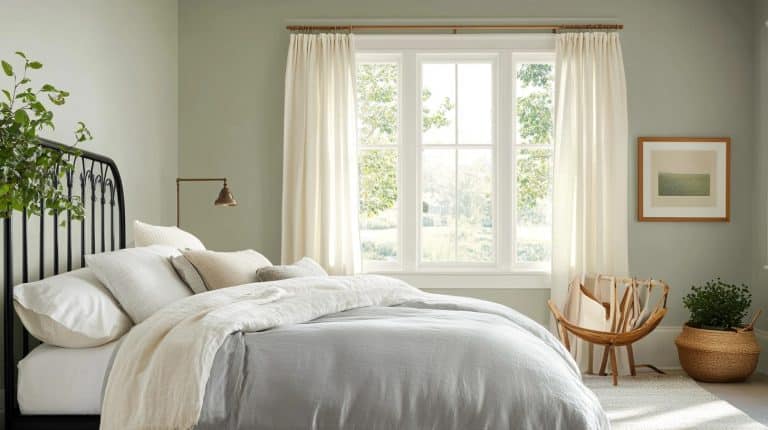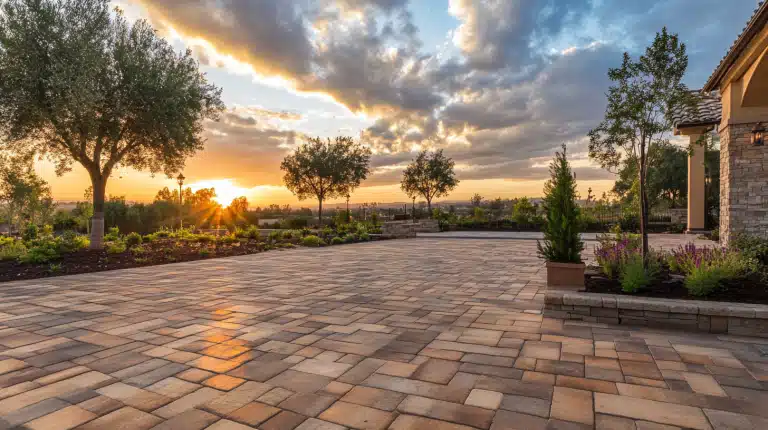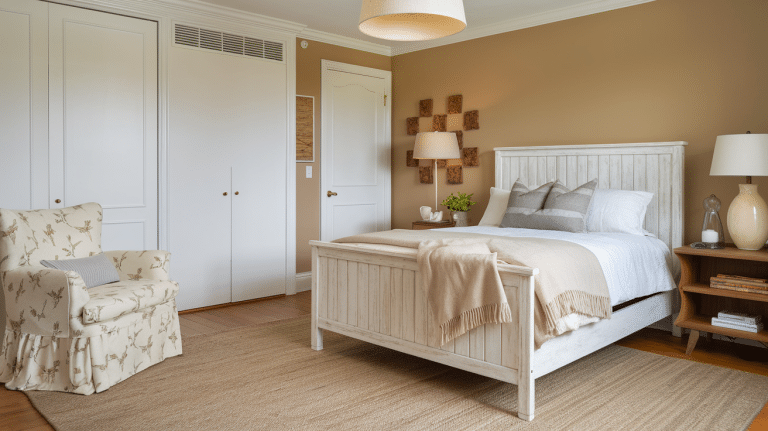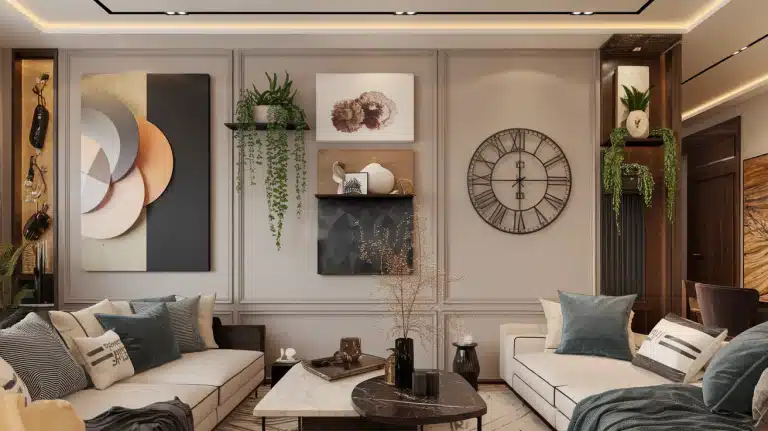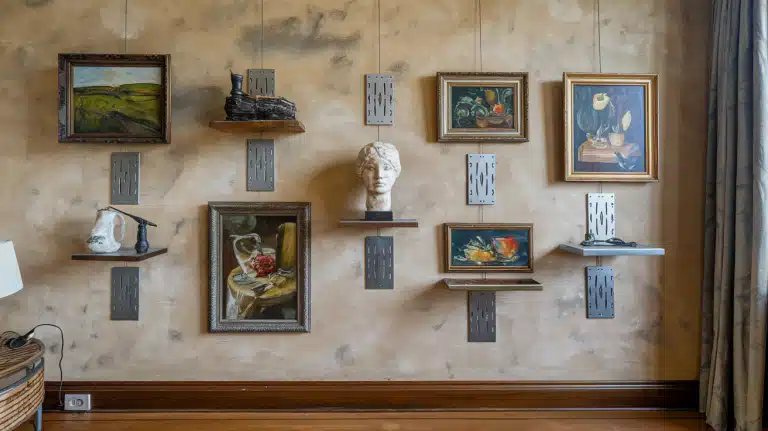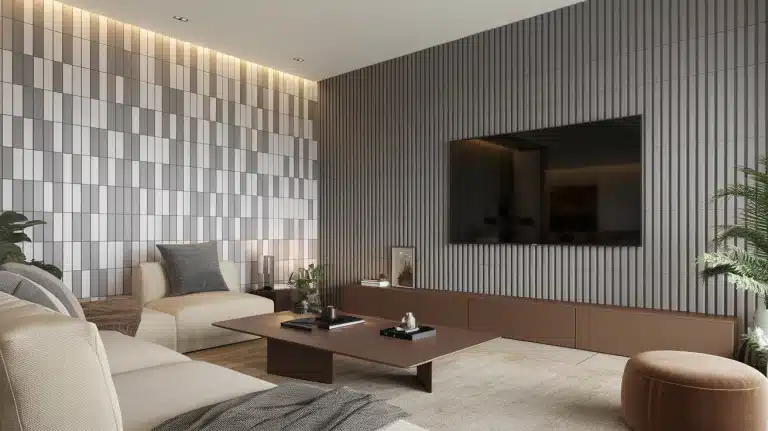How to Decorate a Room on a Budget
Looking at home design magazines can make budget decorating feel impossible. Most people think they need thousands of dollars to create a beautiful home.
But here’s something surprising: You can transform any room without spending a lot of money. In fact, many interior designers start with simple, cost-effective techniques that anyone can use.
Imagine walking into your newly decorated room, knowing you created that stylish space for less than you’d spend on a nice dinner out. You’ll feel proud showing it to friends and family, and they won’t believe how little you spent.
Read on to learn five proven methods to decorate your room while keeping your wallet happy. These tips work for any space, from tiny apartments to large homes.
Plan Before You Start
Before buying anything, take time to prepare. A good plan helps you save money and stops you from making costly mistakes.
- Set a budget and stick to it: Write down your total budget. Split it into categories like furniture, decor, and lighting. Leave some money aside for unexpected costs. Keep your receipts and track spending in a simple spreadsheet.
- Decide on a theme or style: Pick a style that fits your taste. Look at free resources like Pinterest for ideas. Save photos of rooms you like. Notice what colors and items appear often in these rooms.
- Make a list of must-haves: List everything you need, ranked by importance. Focus on basic items first. Consider which pieces will make the biggest impact. This helps you spend money on things that matter most.
Use What You Already Have
Sometimes, the best items for your room are right in front of you. Let’s look at ways to use your current items better.
1. Rearranging furniture for a fresh look: Move your furniture away from walls to create new spaces. Try placing chairs at angles. Switch items between rooms for variety. Consider how traffic flows through your space. Small changes in furniture placement can make rooms feel new.
2. Repurpose old decor items: Look at your things in new ways. Old scarves can become wall hangings. Empty jars work well as vases. Turn wooden crates into side tables. Paint can update old photo frames. Simple changes help old items serve new purposes.
3. DIY upgrades to existing pieces: Update chair cushions with new fabric. Add new handles to old dressers. Paint wooden furniture in fresh colors. Use contact paper to change drawer fronts. These small changes cost little but make big differences.
Remember: Good decorating doesn’t always mean buying new things. Sometimes it’s about seeing what you have with fresh eyes.
Affordable Room Wall Decor Ideas
Empty walls offer many chances to show your style without spending much money. Most people think wall decor requires expensive art, but creative solutions can look just as good. Here’s how to fill your walls wisely and make them stand out.
1. Diy Wall Art and Photo Galleries
Print family photos in black and white for a united, professional look. Local print shops often run sales that make this affordable.
Create gallery walls using matching frames from discount stores – stick to odd numbers like 3, 5, or 7 frames for better visual appeal. Make simple art with paint samples and masking tape by creating geometric patterns.
Frame children’s artwork or vintage book pages found at thrift stores. Group similar items together for more impact. The key is consistency in either frames, colors, or themes.
2. Using Peel-and-Stick Wallpaper
Start with a small area like one wall to test your skills and the pattern’s impact. Choose simple patterns that match your existing furniture and color scheme.
Focus on straight lines for easier application – avoid complex patterns when you’re beginning. Remove air bubbles as you go by using a credit card or flat tool for a smooth finish.
Keep leftover pieces for future touch-ups or repairs. Many brands now offer high-quality options that last several years.
3. Hanging Mirrors to Create Space
Place mirrors across from windows to maximize natural light and make rooms feel bigger. Group smaller mirrors in different shapes for an artistic effect that costs less than large mirrors.
Check second-hand stores and yard sales for unique mirror frames you can paint or update. Position mirrors where they reflect pleasant views or interesting decor pieces.
Use proper wall anchors rated for the mirror’s weight – this small investment prevents costly accidents. Consider placing a mirror near your room’s entrance to create an inviting feel.
These thoughtful changes can transform your walls without breaking your budget. Remember that professional-looking results come from careful planning and proper installation rather than high costs.
Budget-Friendly Furniture Hacks
Quality furniture doesn’t need to drain your bank account. You can find and create beautiful pieces that fit your budget with some searching and creativity. Let’s explore smart ways to get the furniture you want at affordable prices.
1. Thrift Store and Second-Hand Finds
Visit thrift stores early in the morning for the best selection. Look for solid wood pieces rather than particle board – they last longer and take updates better. Check Facebook Marketplace and local buy/sell groups every few days.
Ask about upcoming sales at second-hand stores. Learn to spot quality by checking drawer construction and material weight. Please focus on the piece’s structure rather than its current color or finish.
Consider items from estate sales, which often offer high-quality furniture at low prices.
2. Revamp Old Furniture with Paint or Fabric
Sand furniture properly before painting to ensure good coverage. Use primer on dark wood or laminate surfaces. Choose paint specifically made for furniture – it resists chips better.
Replace old hardware with new knobs and pulls for an instant update—Reupholster chair seats with sturdy fabric and a staple gun. Add trim or molding to plain dressers for extra style.
Test all products on a hidden spot first. Remember that light colors often need more coats than dark ones.
3. Multi-Functional Furniture for Small Spaces
Look for ottomans with hidden storage inside. Choose coffee tables with shelves or drawers underneath. Buy beds with built-in storage drawers. Use trunks as both tables and storage units.
Consider fold-down desks that mount on walls. Pick nesting tables that can spread out when needed. Get dining tables with leaves that extend for guests. Remember that versatile pieces save both money and space.
Smart furniture choices help create a well-designed room without overspending. The key is patience and seeing the potential in each piece.
Low-Cost Room Lighting Solutions
Good lighting changes how a room feels, and it doesn’t need to cost much. Small changes in lighting can make big differences in your space’s mood and function.
1. Use Fairy Lights or Led Strips
String lights create soft, warm lighting for under $20. Place them along bookshelves for a gentle glow. Wrap them around headboards for bedroom ambiance.
Use LED strips under kitchen cabinets for task lighting. Hide wires with clear command hooks. Get battery-operated options for flexibility. Choose warm white bulbs for a cozy feeling. Mix different heights of lighting for interest.
2. Diy Lamp Makeovers
Paint old lamp bases with spray paint made of metal or plastic. Replace outdated lampshades with new ones from discount stores. Clean existing shades thoroughly to brighten their appearance.
Add trim to plain shades for extra style. Update cord covers with rope or fabric. Make sure any changes follow basic safety rules. Keep original hardware for proper fitting.
3. Maximizing Natural Light
Clean windows regularly for better light flow. Place mirrors where they catch and spread sunlight. Use light-colored curtains that let the sun filter through.
Keep furniture from blocking windows. Trim outside bushes that shade windows. Consider removable window film instead of heavy curtains: position desks and reading chairs near windows.
Adding Texture and Layers
A well-designed room needs different textures to feel complete. Here’s how to add warmth and interest without spending too much.
1. Affordable Rugs and Curtains
Check clearance sections for end-of-season deals. Layer smaller rugs for more impact. Use flat-weave rugs that cost less than thick ones. Buy plain curtains and add simple trim. Look for shower curtains to use as window treatments. Watch for holiday sales at big box stores. Consider indoor/outdoor rugs for high-traffic areas.
2. Throw Pillows and Blankets for a Cozy Feel
Buy pillow covers instead of whole new pillows. Make simple covers from discount fabric. Mix different sizes of pillows for interest. Add tassels or pom-poms to plain blankets. Stack blankets in a basket for easy access. Choose washable materials for easy care. Look for seasonal clearance sales.
3. Mixing Materials for Depth
Combine smooth and rough textures in your decor. Add baskets for natural texture. Mix metal and wood finishes. Include glass items for shine and reflection. Use paper or fabric wall hangings. Group similar items in odd numbers. Keep color schemes simple when mixing textures.
Remember that texture builds interest even with simple items. Focus on how things feel as well as how they look.
Greenery on a Budget
Plants make rooms feel alive and fresh without spending much money. Here’s how to add green touches wisely.
1. Using Indoor Plants for a Fresh Touch
Start with easy-care plants like pothos or snake plants. Buy smaller plants – they cost less and grow quickly. Check garden centers’ clearance sections. Place plants at different heights around rooms. Group plants together for better humidity. Choose plants that match your light conditions. Consider fake plants for tricky spots.
2. Propagating Plants Instead of Buying New Ones
Take cuttings from existing plants to grow new ones. Root them in water before planting. Ask friends for plant cuttings to share. Learn which plants grow easily from cuttings. Keep growing conditions steady for better results. Label your cuttings with dates and names. Start multiple cuttings to ensure success.
3. DIY Planters for An Artistic Look
Turn old cans into paint-dipped planters. Use thrift store bowls as plant pots. Make concrete planters with simple molds. Paint plain terra cotta pots in patterns. Add drainage holes to creative containers. Line baskets with plastic for plant use. Remember to match pot size to plant needs.
Smart Storage Solutions
Good storage keeps rooms looking clean and organized. These ideas help control clutter without major spending.
1. Floating Shelves and Wall-Mounted Organizers
Install basic brackets and boards for custom shelving. Use vertical space in small rooms. Put shelves above doors for extra storage. Add hooks under shelves for more function. Keep shelf styling simple and useful. Paint shelves to match your walls. Check load limits before installing.
2. Baskets and Bins for Clutter Control
Label containers clearly for easy use. Choose bins that stack well together. Hide everyday items in pretty boxes. Use clear containers for frequently needed things. Sort items by how often you use them. Keep similar items together. Pick containers that fit your shelves.
3. Space-Saving Furniture
Use bed risers to create under-bed storage. Pick tables with built-in storage. Install over-door organizers for small items. Get furniture that folds when not needed. Use vacuum bags for seasonal storage. Think vertically when planning storage. Consider modular pieces that adapt to needs.
Personal Touches That Cost Nothing
The most meaningful decor often comes from items you already own. Let’s make them shine.
1. Diy Crafts and Handmade Decor
Frame your artwork or sketches. Make paper flowers for wall decor. Create photo collages from old magazines. Turn wine corks into bulletin boards. Use paint samples for simple art. Make seasonal wreaths from natural items. Try basic origami for table decor.
2. Displaying Sentimental Items
Group family photos in matching frames. Show travel souvenirs as art pieces. Display children’s art in rotating galleries. Use inherited items in new ways. Create memory boxes with special items. Turn old letters into wall art. Show collections in organized groups.
3. Creative Ways to Showcase Memories
Make shadow boxes from important events. Use ticket stubs as bookmark art. Display family recipes in the kitchen. Create photo walls with yearly highlights. Frame maps from special trips. Show postcards in grid patterns. Change displays with the seasons.
These personal items make your space unique and meaningful without any extra cost.
Conclusion
Updating your space starts with what you have right now. Small steps and careful planning lead to successful room makeovers.
Looking at your current items, setting money limits, and making clear plans helps you create spaces you’ll enjoy.
Working with your hands to fix up old items brings personal meaning to your home. A fresh coat of paint or new parts can turn basic pieces into special items. These small changes add up to big results.
Remember that making your space feel right takes time. There’s no need to rush or change everything at once. Your home should reflect who you are, not what others think it should be.
Start small, work steadily, and watch your space become more like you want.









